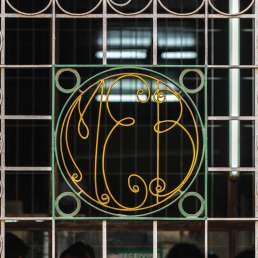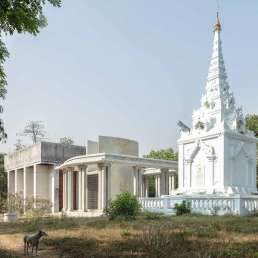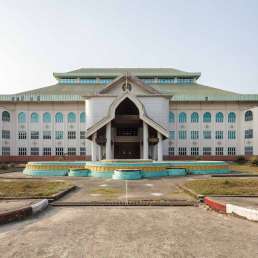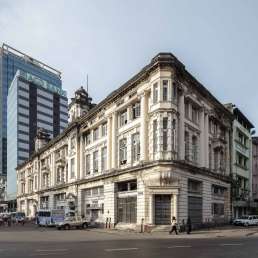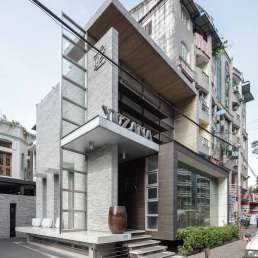Address: 37 Kaba Aye Pagoda Road
Year built: 1958-1962
Architect: Viktor Andreyev and Kaleriya Kislova
The former First Secretary of the Communist Party of the Soviet Union, Nikita Khrushchev, presented the government of Burma with three gifts when he visited the country in 1958. One of these was the Inya Lake Hotel. Secluded from the traffic of the main street, its location on the shores of Inya Lake makes this a tranquil oasis. It is built in the style of a typical “sanatorium”, the rest and recreational centres you still find everywhere across the former Soviet Union. Soviet workers were allocated places in these state-run vacation centres, often located by the sea or big lakes.
The architects transported this architectural concept several thousand kilometres east to post-independence Burma, with the brief to build a resort up to international standards. Burma back then lacked a modern hotel. The Strand had seen better days and the Thamada only opened in 1964.
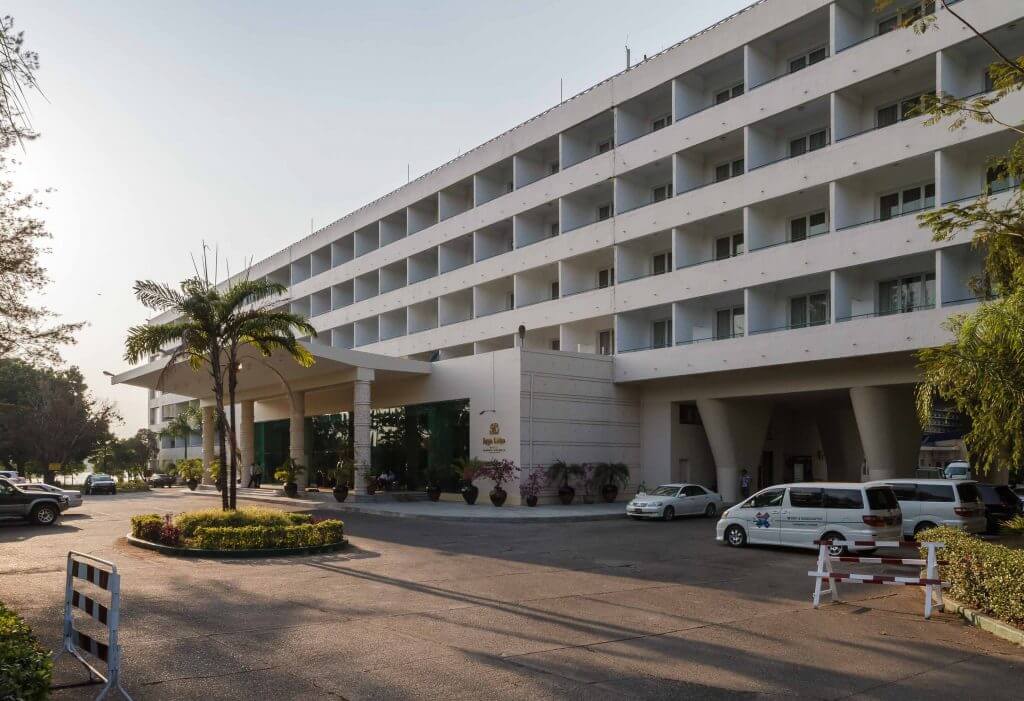
The Inya Lake Hotel has only two features that distinguish it from most Soviet sanatoria of the same period: first, the entrance is larger than usual and features a large portico above the parkway. Perhaps this is explained by local climatic realities, requiring a larger rainproof area by the main entry. Second, the imitation of a steamship funnel on the building’s top gives the hotel a peculiar, cruise ship-like impression, a playful maritime association along the lakeshore. At the back of the hotel, an annex building houses events and banquets. Its decorated, high-ceiling walls are worth observing: this would have been a “House of Culture” in the Soviet Union. These were the main public spaces for people to gather and enjoy sanctioned culture and celebrations outside their usually austere apartments. The hotel used to feature large “Inya Lake Hotel” letterings, both above the entrance and on the steamship funnel around the back.
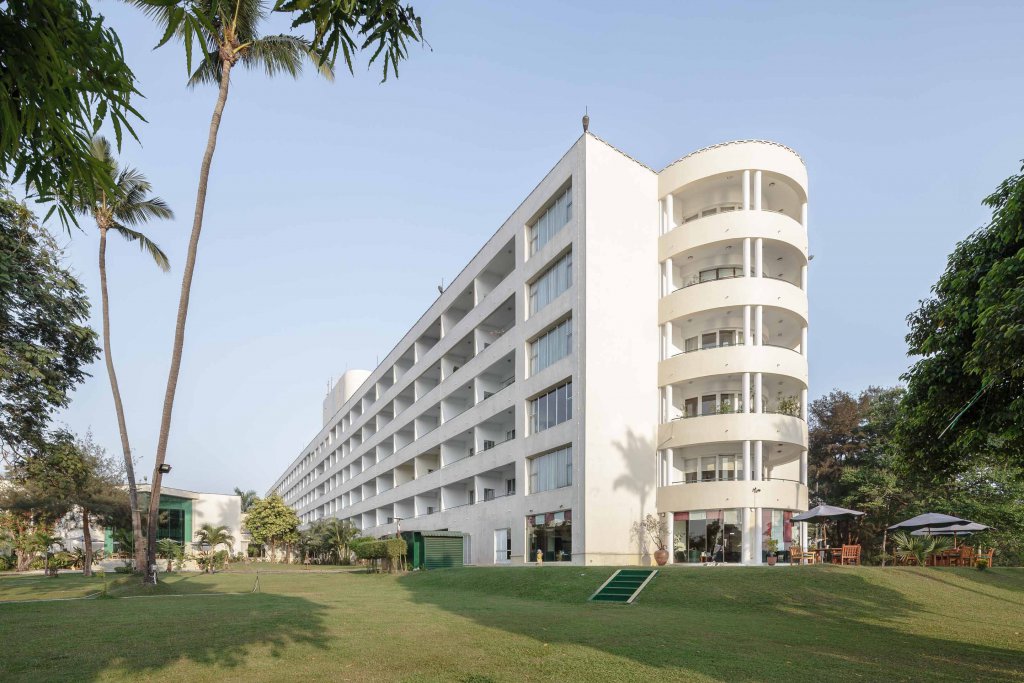
Viktor Semyonovich Andreyev (1905–1988) was a successful Soviet architect born in Kharkov, today’s Kharkiv in Ukraine. (Kharkiv preceded Kiev as the Ukrainian SSR’s capital.) He graduated from its architecture faculty in 1930. Kharkov’s Avant Garde and Constructivist architecture was very prominent, the main example being the Gosprom building complex, dating from the latter half of the 1920s. Many architects from Kharkov moved to Moscow and constituted a strong faction in the architecture profession there. Like other foreign architects introduced in this book, Andreyev’s Burma assignment was just one of several international jobs. He built USSR exhibition pavilions in Vienna and Beijing (the latter is now the Russian Embassy in China) and the Soviet Embassy in Prague. At home in Moscow, he built the Chinese Embassy among many other projects. Andreyev enjoyed high social status in the USSR. He was the recipient of many prizes: two orders of Labour Red Banner, a Stalin Prize of Third Grade, and most importantly perhaps, the People’s Architect of the USSR Prize in 1978.
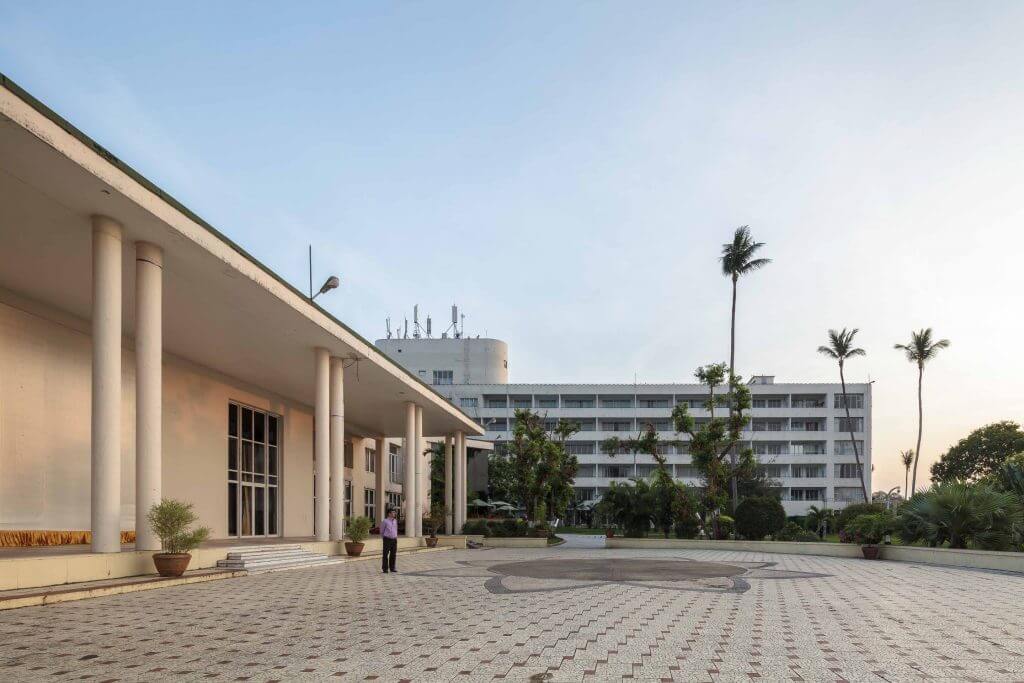
Sadly, not much is known about the second architect, Kaleriya Dmitriyevna Kislova. She is the only female architect featured in these pages and deserves as detailed a portrait as our research could muster. Her name appears in a 1950 Soviet illustrated magazine called Ogonyok. The article interviews several women in successful careers, and Kislova is shown in her design bureau, explaining that she thoroughly examined every flat in the buildings constructed according to her designs. Together, Kislova and Andreyev built the House of Political Education of the Soviet Union’s Communist Party in 1979, in Moscow. It was demolished after the Union’s collapse, perhaps because it symbolised the “poisoned” air of Communism, as historian and journalist Petr Kozma explains. Today, the same plot is occupied by an office centre that is “a tremendous monster, much uglier than its allegedly poisoned predecessor,” in Kozma’s judgement.
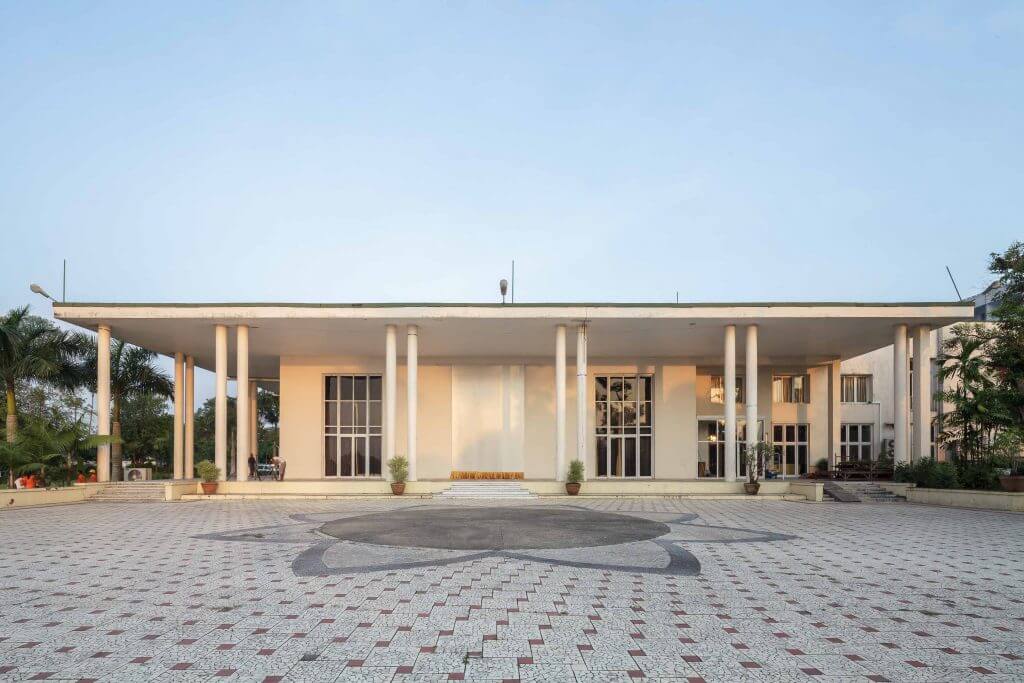
The Inya Lake Hotel was renovated and upgraded by hotelier Adrian Zecha in 1990. It was a reluctant assignment imposed on him, as we describe in our descriptions of the Strand Hotel and the Thamada which he also renovated. Zecha dismissed the Inya Lake Hotel as a “Russian bunker”. The hotel has been kept in good shape and, although it may be a little far from downtown to constitute an entirely practical place to stay, you are well advised to enjoy a cold beverage in the garden cafe overlooking the lake.
